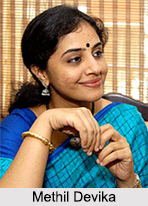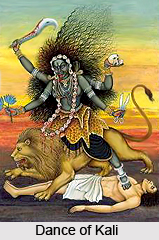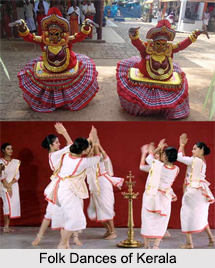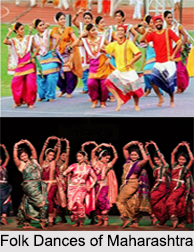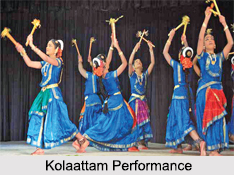 History of Indian Classical Dance has witnessed throughout a series of changes. In India, dance developed as a classical art and served as a medium between external world and internal teachings. Ancient India finds indication of the kings, queens and princesses being enthusiast of dance. In the ancient Indian kingdom, the kings used to accompany in flute or veena to the dancers. Thus dance in India developed on the basis of Bhakti or devotion, Nyaya or justice, Satya or truth, Ghanate or dignity and Soundarya or beauty. History of Indian dances adores classical dance forms. Classical dance has a history of 2000 long years. It has been observed that the classical style of dancing was developed in the 2nd and 3rd centuries. Indian classical dance forms subsist in six different form including Bharatnatyam, Kathak, Kathakali, Kuchipudi, Manipuri, Mohiniattam, and Odissi.
History of Indian Classical Dance has witnessed throughout a series of changes. In India, dance developed as a classical art and served as a medium between external world and internal teachings. Ancient India finds indication of the kings, queens and princesses being enthusiast of dance. In the ancient Indian kingdom, the kings used to accompany in flute or veena to the dancers. Thus dance in India developed on the basis of Bhakti or devotion, Nyaya or justice, Satya or truth, Ghanate or dignity and Soundarya or beauty. History of Indian dances adores classical dance forms. Classical dance has a history of 2000 long years. It has been observed that the classical style of dancing was developed in the 2nd and 3rd centuries. Indian classical dance forms subsist in six different form including Bharatnatyam, Kathak, Kathakali, Kuchipudi, Manipuri, Mohiniattam, and Odissi.
Origin of Indian Classical Dance
History of Indian classical dance considers Natyashastra as its main source. It was on Lord Indra`s request that Brahma wrote the fifth Veda called Natyashastra. Lord Indra was worried of people deviating away from the right path. Thereafter he did consult with Lord Brahma to overcome his worries. Indra insisted on having a fifth Veda, which would be constructive and entertaining. Lord Brahma made out a fifth Veda called the Natyashastra. He used speech from the Rig Veda, expression from the Yajur Veda, Rasa portrayal from the Atharva Veda and music from the Sama Veda. He taught Natyashastra to Sage Bharata.
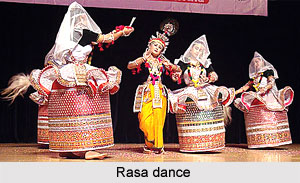 The presiding deity of Dance is Lord Shiva. Bharatnatyam, Kuchipudi, Odissi, Manipuri, Kathakali and Kathak are the main classical dance forms of India. Through facial expressions nine emotional moods can be depicted. They are Raudra, Bhayanaka, Sringara, Veera, Hasya, Karuna, Adbhuta, Bibhatsa and Shanta. Use of mudras is one of the striking features of Indian classical dances.
The presiding deity of Dance is Lord Shiva. Bharatnatyam, Kuchipudi, Odissi, Manipuri, Kathakali and Kathak are the main classical dance forms of India. Through facial expressions nine emotional moods can be depicted. They are Raudra, Bhayanaka, Sringara, Veera, Hasya, Karuna, Adbhuta, Bibhatsa and Shanta. Use of mudras is one of the striking features of Indian classical dances.
Two facts have been deduced from the History of Indian dances. The first is that despite regional variations, the basic principles of Natyashastra tradition has been followed by all schools. Dance continued to be divided into Natya and Nritta on the one hand and into Tandava and Lasya on the other. The second fact is that many distinctive regional styles developed and each region also developed a native vocabulary. This led to the formulation of different classical styles in India based on regions. The contemporary classical dances like Bharatanatyam, Kathakali, Manipuri, Odissi and Kathak can be traced back to the medieval period dating from 1300 A.D. to 1800 A.D. The different styles of Indian classical dance were practiced during periods of political upheaval and lack of social patronage also. Family traditions namely the sampradayas grew within these styles. The masters were the storehouse of an oral tradition who preserved and nurtured it. In spite of the lack of basic education and unfamiliarity with the Sanskrit language the masters contributed to the growth of dance as an art form.
Influence of Temple Dancers
Through centuries the dances in India are considered a medium of worship and expression of emotions. History of Indian dances glorifies the temple dancers or the Devadasis. The Devadasis have led ascetic lives in order to perform holy dances to please Gods and Goddesses. The Indian classical dance form is said to be influenced by the Devadasi dance style. Various Indian kingdoms also provide proof about brilliant temple dancers. There were dancing halls where young female dancers were given intensive training. The training hall was decorated with various paintings which represented different dancing poses. These paintings were helpful for the dancers so that they could correct their steps.
Religious Influence on Indian Classical Dances
 Religious element always played a vital role in dancing. In ancient India, Shaivite tradition of dance originated on the belief and worship of Lord Shiva, the lord of dance. `Lasya` and `Tandava` were the very genesis of Lord Shiva`s dancing style. Lasya is the dance of aesthetic delight that reveals beauty, grace, love and all tender aspects of existence. Furthermore, it is believed that Shiva`s consort have performed dance in her manifestations as Kali and many other forms. Each of her dance form represents a particular bhava. Indian dances have implemented these forms and characteristics. History of Indian dances is also about the development of dance form based on Vaishnavite tradition. This is a particular dance style which is believed to have performed by Sri Krishna in Vrindavan. Gradually this tradition has developed as raslila, and is considered as a form of devotional dance.
Religious element always played a vital role in dancing. In ancient India, Shaivite tradition of dance originated on the belief and worship of Lord Shiva, the lord of dance. `Lasya` and `Tandava` were the very genesis of Lord Shiva`s dancing style. Lasya is the dance of aesthetic delight that reveals beauty, grace, love and all tender aspects of existence. Furthermore, it is believed that Shiva`s consort have performed dance in her manifestations as Kali and many other forms. Each of her dance form represents a particular bhava. Indian dances have implemented these forms and characteristics. History of Indian dances is also about the development of dance form based on Vaishnavite tradition. This is a particular dance style which is believed to have performed by Sri Krishna in Vrindavan. Gradually this tradition has developed as raslila, and is considered as a form of devotional dance.
The origin of Indian dance has been divine. In fact dance in India covers a broad range of dance and dance theatre forms, from the temple dance to folk and modern styles. Hindu deities like lord Shiva, goddess Kali and Lord Krishna, are invocated initially in most of the classical Indian dances as they represent dance as an art.
Mughal Influence on Indian Classical Dance
The approaching of the Mughal dynasty in India contributed a radical change in the Indian dance form. The Devadasi system prevailed in most parts of southern India. These institutions of dancing girls became an accepted part of Muslim society. However, Muslims of Agra illustrated various types of dancing girls. Although these dancing girls were different from the Devadasi and they were highly sophisticated courtesans and repositories of culture and refinement. In addition to that, the Kathak witnessed a change around the 15th century. As an influence to the Persian culture, Kathak saw a great change in the costumes too.
The Indian classical dance had witness an apparent downfall a century ago. It has revived and has gained immense popularity throughout the world since past few decades. Each classical dance is identified with different Indian states. The term classical was introduced by Sangeet Nataka Academy to signify the performing art styles of Natyashastra.
